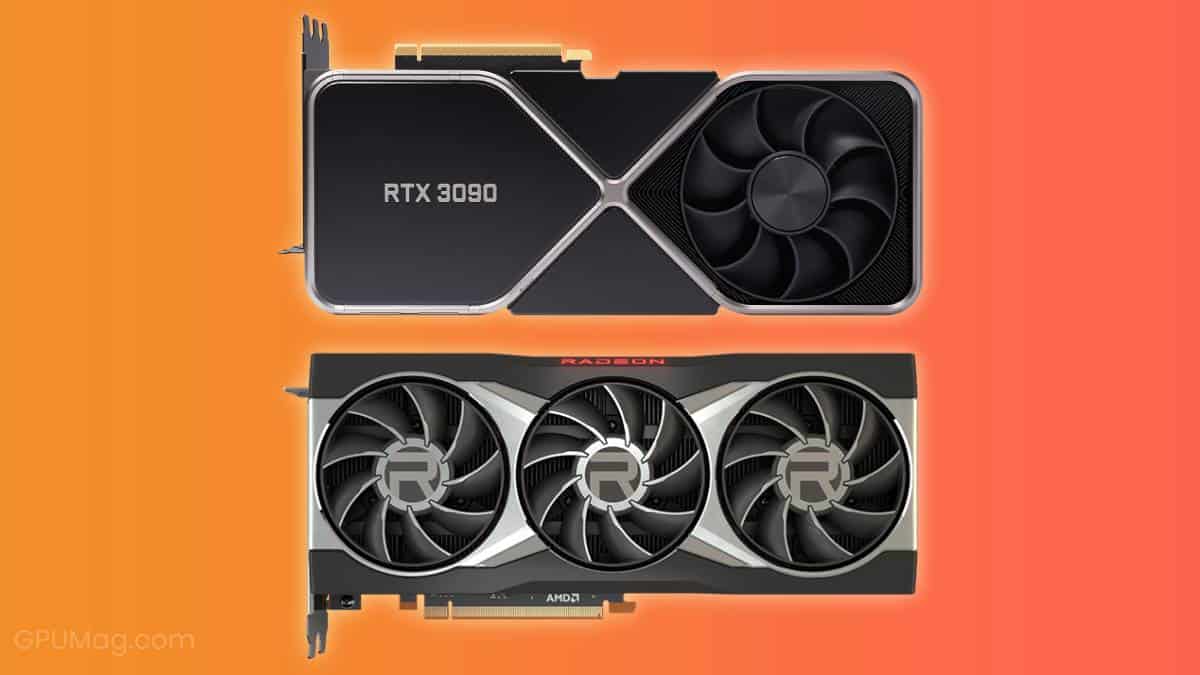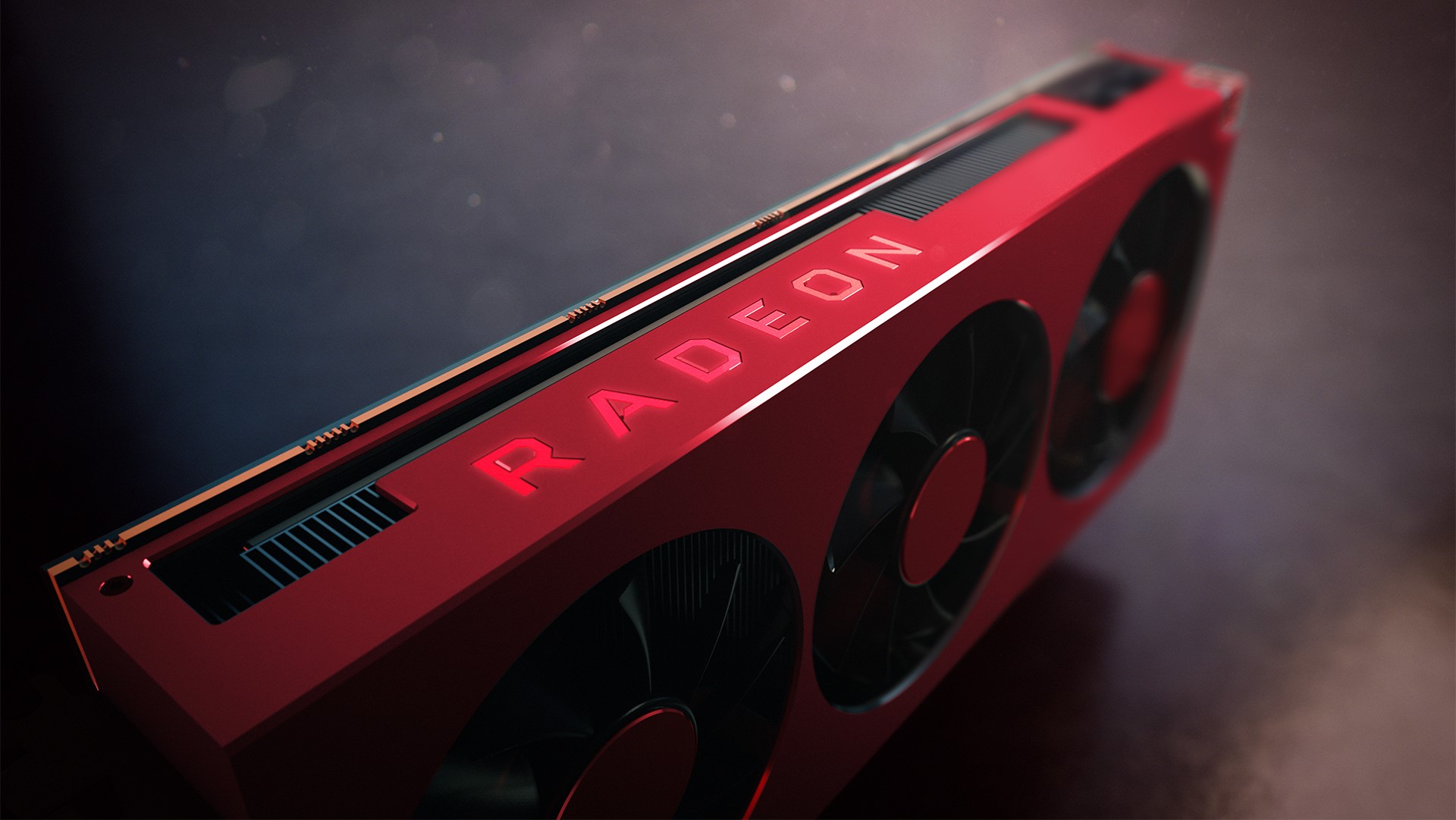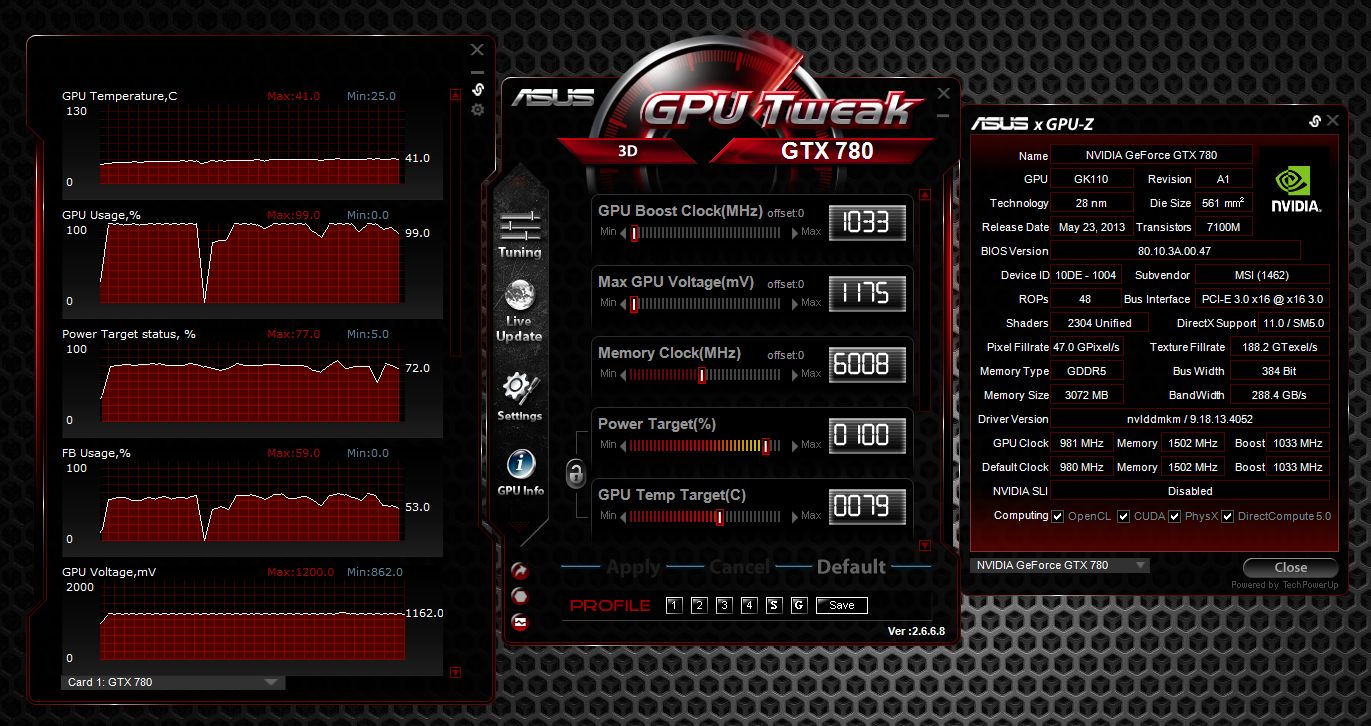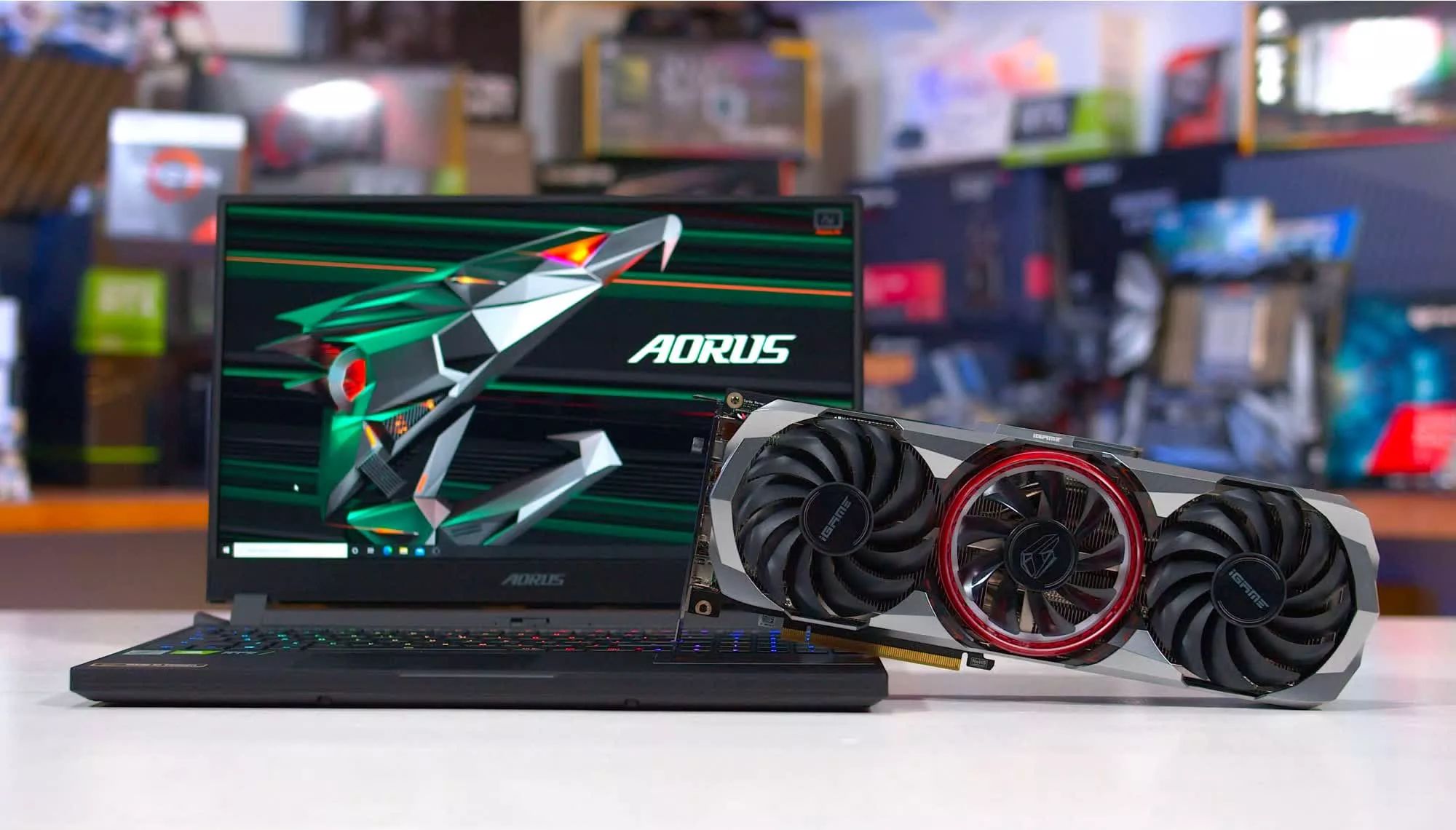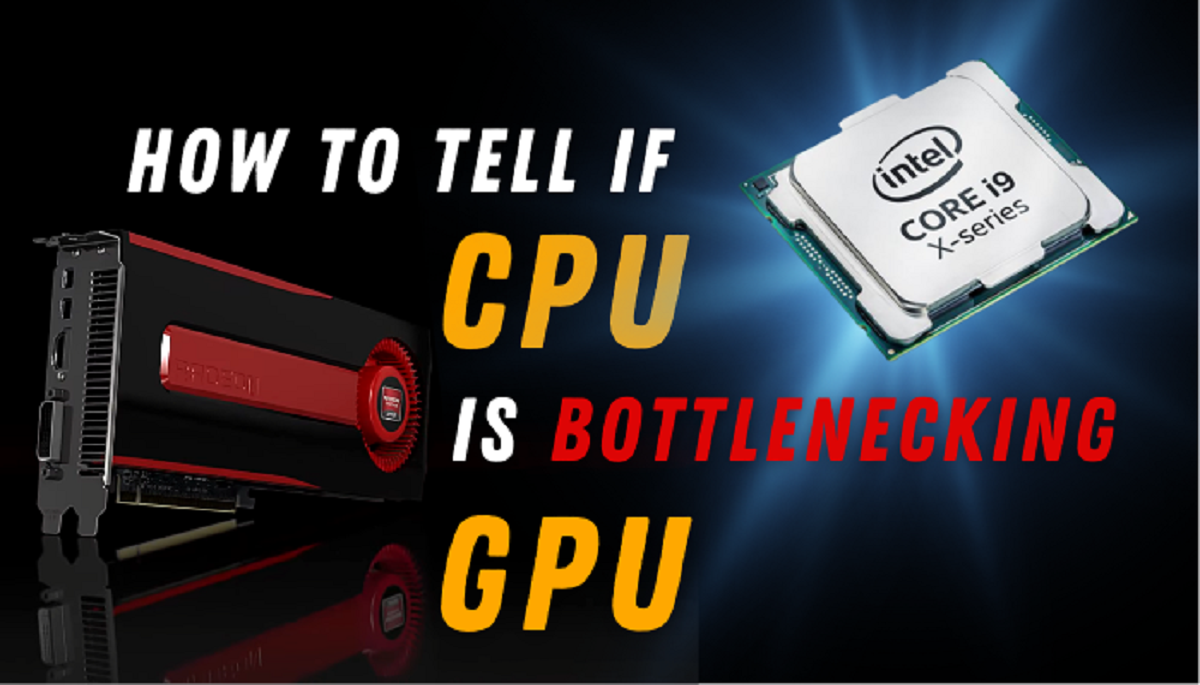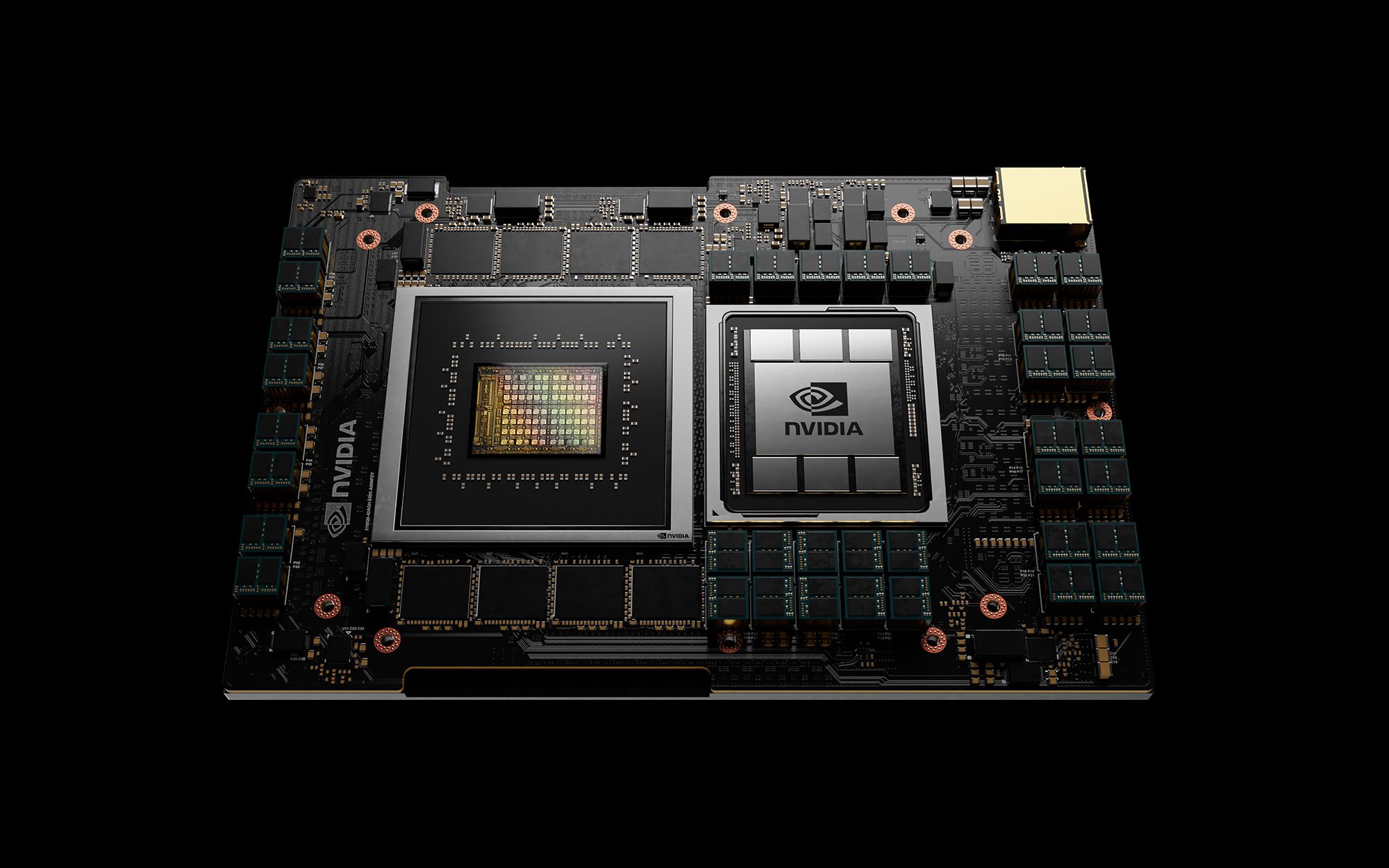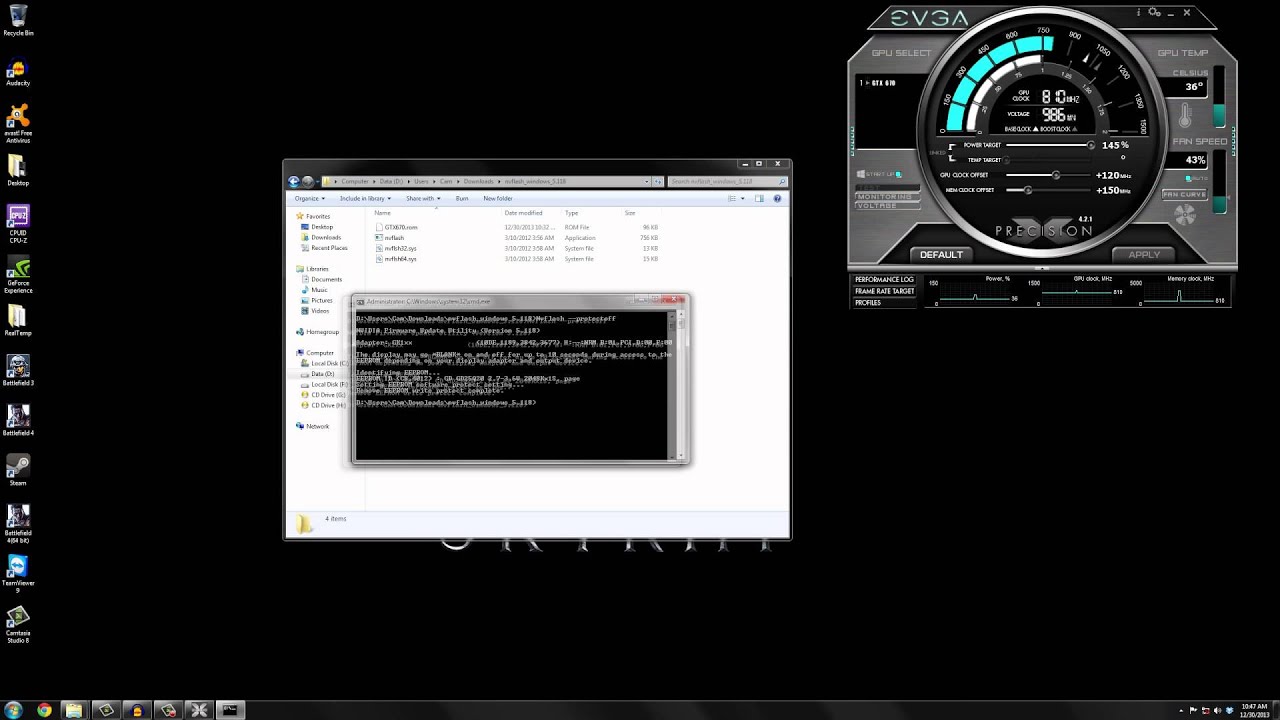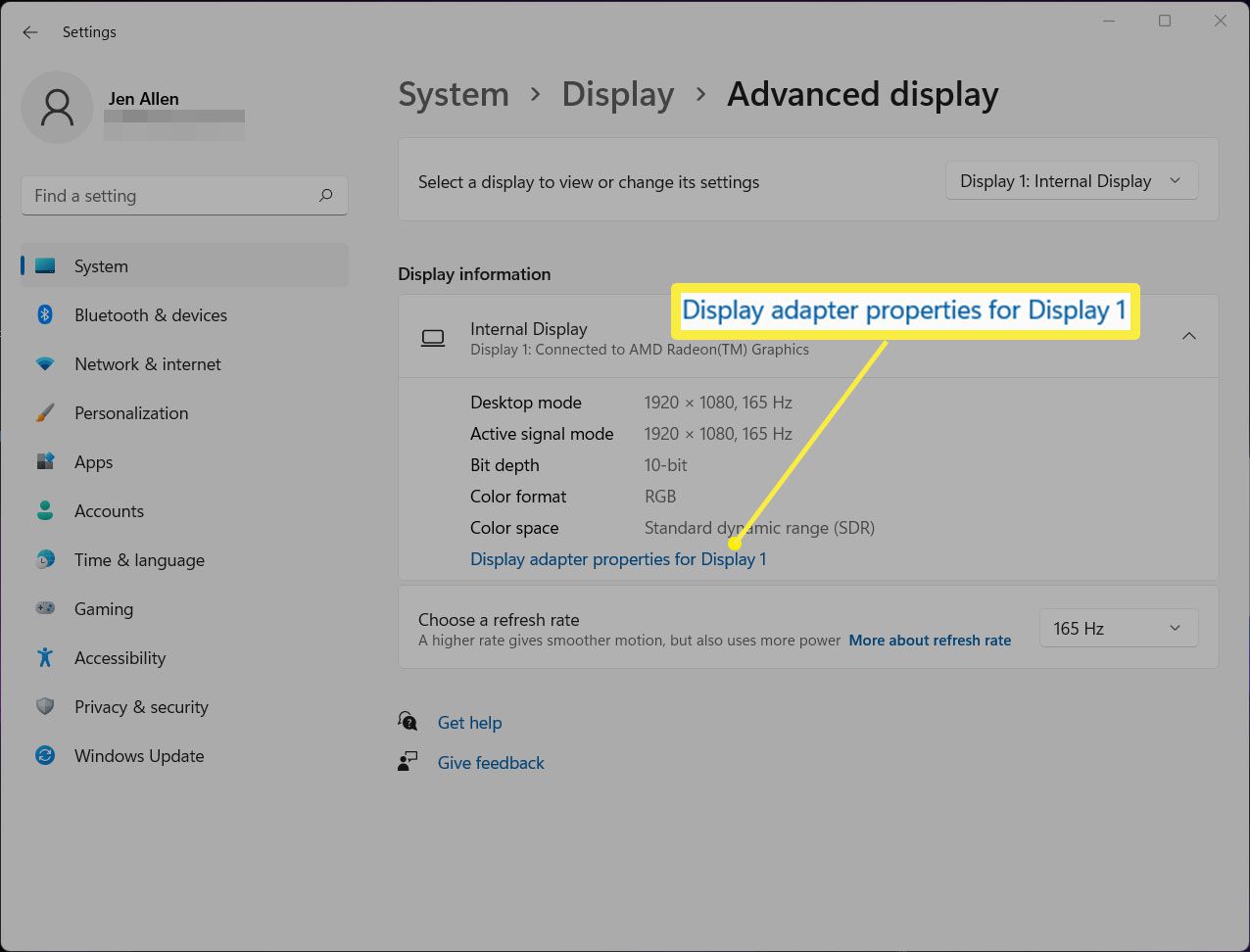What Is A Reference GPU
A reference GPU, also known as a stock GPU or a founder’s edition GPU, is a graphics processing unit that serves as the standard design and specification for a particular graphics card model. It is developed and released by the GPU manufacturer, such as NVIDIA or AMD, as a baseline reference for other manufacturers and partners to follow.
The reference GPU is essentially the blueprint that defines the physical layout, architecture, and performance capabilities of a graphics card. It serves as a template for third-party manufacturers to create their own versions of the GPU with customized cooling solutions, higher clock speeds, or design variations.
The primary purpose of a reference GPU is to set the standard for performance and compatibility for a given graphics card model. It acts as a baseline that ensures consistency among all the variants of the graphics card released by different manufacturers. This allows consumers to make an informed decision when choosing a graphics card, as they can expect a certain level of performance and compatibility regardless of the brand they choose.
Reference GPUs are typically the first GPUs to be released by the manufacturer when a new graphics card generation is launched. They are designed to showcase the capabilities of the GPU architecture and serve as a reference point for developers, reviewers, and enthusiasts to gauge the performance of the new generation of graphics cards.
One of the key characteristics of a reference GPU is the cooling solution. Reference GPUs often come equipped with a standard cooling design, such as a blower-style fan and heatsink, which exhaust hot air out of the rear of the graphics card. This design allows the GPU to fit into a wide range of computer cases and ensures compatibility with various cooling configurations.
Additionally, reference GPUs typically feature the base clock and boost clock speeds set by the GPU manufacturer. These clock speeds may not be the highest achievable speeds for the GPU, as third-party manufacturers may release custom variants with higher clock speeds for greater performance. However, the reference clock speeds provide a point of reference for comparing different versions of the same GPU model.
In summary, a reference GPU is the standard design and specification released by the GPU manufacturer that serves as a baseline for other manufacturers to follow. It ensures consistency in performance and compatibility across different variants of the graphics card model. While reference GPUs may not offer the highest clock speeds or custom features, they provide a reliable and consistent option for consumers looking for a graphics card that meets the standard specifications.
Introduction
Graphics processing units (GPUs) have become an integral component of modern computers, playing a crucial role in rendering images, videos, and 3D graphics. As technology advances, GPU manufacturers continuously develop new and improved models to meet the growing demands of gamers, designers, and professionals. One important concept to understand in the world of GPUs is the reference GPU.
When exploring the market for graphics cards, you may come across terms like reference GPUs, stock GPUs, or founder’s editions. These terms refer to a specific category of GPUs that serve as the standard design and specification provided by the GPU manufacturer. In this article, we will delve into the world of reference GPUs, examining their definition, characteristics, purpose, advantages, and disadvantages.
Understanding the concept of a reference GPU is essential for anyone considering purchasing a graphics card. While there are various options available from different manufacturers, it’s crucial to grasp the role that reference GPUs play in the overall ecosystem. This knowledge will enable you to make informed decisions when comparing different graphics card models and ensure compatibility with your computer system.
In this article, we will explore the key aspects of reference GPUs, including their role as the standard design and specification provided by the GPU manufacturer. We will also discuss the characteristics that distinguish them from custom GPUs and examine both the advantages and disadvantages of opting for a reference GPU.
Furthermore, we will compare reference GPUs with custom variants to help you understand the trade-offs involved in making a choice. By the end of this article, you will have a comprehensive understanding of reference GPUs and their significance in the world of graphics cards.
Now, let’s dive deeper into the world of reference GPUs and uncover their unique characteristics and implications for users and enthusiasts alike.
Definition of a Reference GPU
A reference GPU, also referred to as a stock GPU or a founder’s edition GPU, is a graphics processing unit that serves as the standard design and specification for a particular graphics card model. It is developed and released by the GPU manufacturer, such as NVIDIA or AMD, as a blueprint for other manufacturers and partners to follow.
Think of a reference GPU as the fundamental template that defines the physical layout, architecture, and performance capabilities of a graphics card. It acts as a reference point for third-party manufacturers to create their own versions of the GPU with custom cooling solutions, higher clock speeds, or design variations.
When a new graphics card model is released, the GPU manufacturer typically introduces the first version as a reference GPU. This initial release showcases the capabilities of the new GPU architecture and sets the performance standards for subsequent variants produced by different manufacturers.
One primary purpose of a reference GPU is to provide consistency in performance and compatibility across all the different models of a specific graphics card. It ensures that consumers can expect a certain level of performance and compatibility, regardless of the brand they choose.
Reference GPUs also serve as a reference point for developers, reviewers, and enthusiasts to assess the performance of a new generation of graphics cards. They help gauge the improvements and innovations introduced in the GPU architecture by comparing it to the previous generation and other competing models.
Additionally, reference GPUs often feature a standard cooling solution, such as a blower-style fan and heatsink, that exhausts hot air out of the rear of the graphics card. This cooling design allows the GPU to fit into a wide range of computer cases and ensures compatibility with various cooling configurations.
In summary, a reference GPU is the standard design and specification released by the GPU manufacturer. It acts as a blueprint for third-party manufacturers to create their own versions of the GPU. It provides consistency in performance and compatibility across different graphics card models and sets the standards for subsequent variants. Furthermore, a reference GPU helps showcase the capabilities and innovations of a new GPU architecture.
Characteristics of a Reference GPU
A reference GPU possesses several characteristics that distinguish it from custom and aftermarket versions. These characteristics play a significant role in defining the identity and functionality of a reference GPU. Let’s explore these key characteristics:
Standard Design: A reference GPU features the standard design and layout designed by the GPU manufacturer. It serves as the baseline design for third-party manufacturers to follow when creating their own variants. This standard design ensures consistency in physical dimensions, connectors, and interface placements.
Baseline Clock Speeds: Reference GPUs typically come with the base clock and boost clock speeds defined by the GPU manufacturer. These clock speeds serve as the default settings, which may not be the highest achievable speeds for the GPU. Third-party manufacturers often release custom variants with higher clock speeds for improved performance.
Standard Cooling Solution: Another characteristic of reference GPUs is their standard cooling solution. They often feature a blower-style fan and heatsink design, which exhausts hot air out of the rear of the graphics card. This cooling solution allows the GPU to fit into various computer cases and ensures compatibility with different cooling configurations.
Reference PCB Design: The printed circuit board (PCB) on a reference GPU follows the standard design provided by the GPU manufacturer. It includes the necessary power delivery components, memory modules, and connectivity options. Third-party manufacturers may modify the PCB design in their custom variants to enhance power delivery and overclocking capabilities.
Founder’s Edition: In the case of NVIDIA graphics cards, a reference GPU is often referred to as the Founder’s Edition. These cards typically have a unique design and may come with premium features compared to other variants. The Founder’s Edition serves as NVIDIA’s flagship model, showcasing the full potential of the GPU architecture.
Compatibility: Due to its standard design and specifications, a reference GPU offers greater compatibility with computer systems and aftermarket components. It ensures that the graphics card can fit into a wide range of motherboards, case sizes, and cooling configurations, making it easier for users to upgrade their systems with confidence.
In summary, the characteristics of a reference GPU include a standard design, baseline clock speeds, standard cooling solution, reference PCB design, the concept of a Founder’s Edition (in the case of NVIDIA), and compatibility. These characteristics define the identity and functionality of a reference GPU, providing a consistent and reliable option for consumers to consider when purchasing a graphics card.
Purpose of a Reference GPU
The purpose of a reference GPU goes beyond being a mere blueprint for third-party manufacturers. It serves multiple important functions within the graphics card ecosystem. Let’s delve into the key purposes of a reference GPU:
Standardization: One primary purpose of a reference GPU is to establish a standard design and specification for a specific graphics card model. By providing a reference point, the GPU manufacturer ensures that all versions of the graphics card adhere to the same performance and compatibility standards. This standardization allows consumers to compare different variants and make informed decisions based on their specific needs and preferences.
Consistency: Reference GPUs ensure consistency in performance across different models of the same graphics card. By defining the baseline clock speeds and cooling solutions, a reference GPU offers a known performance level that users can expect from any variant of that particular graphics card. This consistency helps eliminate confusion and provides a reliable point of reference for consumers.
Compatibility: Another important purpose of a reference GPU is to ensure compatibility with various computer systems. The standard design and dimensions enable the graphics card to fit into different motherboards and computer cases seamlessly. Moreover, the reference cooling solution is designed to work with a wide range of cooling configurations, ensuring compatibility with aftermarket cooling solutions.
Showcasing New Technology: Reference GPUs often act as a platform for GPU manufacturers to showcase their latest technology and innovations. These GPUs are usually the first to be released when a new GPU architecture is introduced. They demonstrate the capabilities and improvements of the new technology, providing a glimpse into the future of graphics processing power.
Reference for Reviews and Development: For reviewers, developers, and enthusiasts, reference GPUs serve as a reference point for evaluating a new graphics card architecture. These GPUs are extensively analyzed and benchmarked to assess performance, power consumption, and compatibility. Their availability helps provide early feedback and insights that shape driver updates, optimization efforts, and game development.
Easier Comparison: Reference GPUs make it easier for consumers to compare different graphics card models. Despite the existence of custom variants with higher clock speeds or additional features, the reference GPU offers a consistent performance baseline. This allows users to easily assess the value proposition of each model and make informed decisions based on their budget and desired performance level.
In summary, the purpose of a reference GPU includes standardization, ensuring consistency in performance, enhancing compatibility, showcasing new technology, serving as a reference for reviews and development, and enabling easier comparison between different graphics card models. These purposes collectively contribute to a more streamlined and informed purchasing process for consumers while setting the foundation for innovation and progress within the GPU industry.
Advantages of a Reference GPU
Reference GPUs offer several advantages that make them an attractive option for consumers in the graphics card market. These advantages stem from their standard design and specifications. Let’s explore some of the key benefits of opting for a reference GPU:
Standard Performance: One of the primary advantages of a reference GPU is predictable performance. Since all variants of a specific graphics card model are based on the reference GPU, they generally offer similar performance levels. This allows users to make accurate performance comparisons and select a graphics card based on their specific needs and budget.
Wider Availability: Reference GPUs are typically the first to be released when a new graphics card generation launches. As a result, they tend to have wider availability compared to custom variants. This makes it easier for consumers to find and purchase a reference GPU without having to wait for customized versions to hit the market.
Compatibility: As the standard design, reference GPUs are designed to be compatible with a wide range of computer systems. They are built to fit into various motherboard form factors and cases, making it easier for users to upgrade their existing systems with a compatible graphics card. Additionally, the reference cooling solution is designed to work with different cooling configurations, ensuring compatibility with various aftermarket cooling solutions.
Comparison: Reference GPUs provide a baseline for performance comparisons among different graphics card models. Consumers can refer to the reference GPU specifications to compare clock speeds, cooling solutions, and power consumption of different variants. This enables users to easily evaluate and select a graphics card that aligns with their desired performance and budget.
Reference Cooling: Reference GPUs come with a standard cooling solution that exhausts hot air out of the rear of the graphics card. This design helps maintain a stable temperature inside the system and reduces the reliance on specific case or aftermarket cooling configurations. Additionally, the reference cooling solution is specifically designed to fit within standard computer cases without compatibility issues.
Flagship Features: In the case of NVIDIA graphics cards, the reference GPU is released as the Founder’s Edition, featuring premium design and sometimes exclusive features. These flagship models often showcase the full potential of the new GPU architecture and serve as an indicator of the manufacturer’s technological advancements.
In summary, the advantages of a reference GPU include standard performance, wider availability, compatibility with various computer systems, facilitating comparisons among different models, reference cooling solutions, and access to flagship features. These advantages make reference GPUs an appealing choice for consumers seeking reliable performance and compatibility, as well as the ability to make informed decisions based on standardized specifications.
Disadvantages of a Reference GPU
While reference GPUs offer several advantages, they also have some limitations and drawbacks that users should consider before making a purchase decision. Understanding these disadvantages will help users weigh their options and choose the most suitable graphics card for their needs. Let’s explore some of the key disadvantages of a reference GPU:
Limited Overclocking Potential: Reference GPUs are typically designed with conservative clock speeds to ensure stability across all variants of the graphics card model. This means that they may not offer the same level of overclocking potential as custom variants. Enthusiasts who seek maximum performance through overclocking might find reference GPUs limiting in terms of achieving higher clock speeds.
Higher Noise Levels: The standard cooling solution used in reference GPUs, often a blower-style fan, can generate more noise compared to custom cooling solutions. This is because the blower-style fan is designed to exhaust hot air out of the rear of the graphics card, resulting in more audible noise levels. Users who prioritize quiet operation may find the noise produced by reference GPUs to be a disadvantage.
Lower Thermal Performance: Due to the design constraints of the standard cooling solution, reference GPUs may have slightly higher operating temperatures compared to custom versions. This can lead to increased thermal throttling, where the GPU reduces its clock speed to prevent overheating. Users who demand optimal thermal performance may opt for custom cooling solutions that offer better heat dissipation.
Limited Design Options: Reference GPUs follow the standard design and layout provided by the GPU manufacturer. This means that users have limited options for aesthetics and physical design features. On the other hand, third-party manufacturers may offer custom versions with unique designs, RGB lighting, and specialized cooling solutions that cater to consumers seeking more customization options for their graphics card.
Premium Pricing: In some cases, reference GPUs, especially the Founder’s Edition models, may come with a higher price tag compared to custom variants with similar specifications. This premium pricing is often justified by the exclusive features and early availability of the reference GPU. However, users on a tight budget may find better value in custom versions that offer similar performance at a lower price point.
Availability During Initial Launch: While reference GPUs tend to have wider availability compared to custom variants, this may not always be the case during the initial launch period. Due to high demand and limited production capacity, reference GPUs can experience shortages, leading to availability issues. Users looking to purchase a graphics card at the time of a new release should consider the possibility of limited availability for reference GPUs.
In summary, the disadvantages of a reference GPU include limited overclocking potential, higher noise levels, lower thermal performance, limited design options, potentially higher pricing, and availability concerns during the initial launch phase. These factors should be considered alongside the advantages and personal preferences of the user when making a decision about which graphics card to purchase.
Comparison with Custom GPUs
When considering a graphics card purchase, it’s important to compare reference GPUs with custom variants to determine the best option for your specific needs. Custom GPUs, as the name suggests, are graphics cards produced by third-party manufacturers that deviate from the standard reference design and specifications. Let’s explore the key points of comparison between reference GPUs and custom GPUs:
Design and Cooling: One significant difference between reference GPUs and custom GPUs is the design and cooling solution. Reference GPUs adhere to the standard design provided by the GPU manufacturer, while custom GPUs offer unique physical designs and cooling solutions. Custom variants often feature larger heatsinks, more efficient cooling fans, and specialized RGB lighting options, allowing users to customize the aesthetics and thermal performance according to their preferences.
Performance and Overclocking: Custom GPUs often offer higher clock speeds and better overclocking potential compared to reference GPUs. Manufacturers often release custom variants with factory overclocks, pushing the GPU beyond the standard clock speeds of the reference design. These custom versions may also provide better power delivery systems and more robust PCB designs, allowing for greater stability during overclocking. Enthusiasts seeking optimal performance through overclocking may prefer custom GPUs over reference GPUs.
Pricing and Availability: Reference GPUs, particularly the Founder’s Edition models, may come with a higher price tag compared to some custom variants with similar specifications. Custom GPUs from different manufacturers introduce competition and offer a wider range of price points. Additionally, during new graphics card releases, reference GPUs may have wider availability initially, while custom variants may take some time to hit the market. Users should consider their budget and availability requirements when deciding between reference and custom GPUs.
Software and Support: GPU manufacturers often offer robust software support for their reference GPUs. This includes regular driver updates, optimization for popular games and applications, and access to exclusive features. However, custom GPU manufacturers may also provide their own software utilities and features specific to their graphics cards. Users should consider the software ecosystem and ongoing support provided by both reference and custom GPU manufacturers.
Warranty and Customer Service: The warranty and customer service experience can vary between reference and custom GPU models. Reference GPUs often come with manufacturer warranties that provide reliable support and service. Custom GPU manufacturers may have their own warranty policies and customer service departments, which can offer different levels of support. Users should consider the warranty coverage and customer service reputation of both reference and custom variants when making a decision.
In summary, the comparison between reference GPUs and custom GPUs revolves around design and cooling options, performance and overclocking potential, pricing and availability, software support, and warranty and customer service. Users should carefully evaluate these factors based on their individual preferences, budget, and performance requirements when selecting a graphics card.
Conclusion
In conclusion, reference GPUs serve as the standard design and specification for a specific graphics card model. They ensure consistency in performance and compatibility across different variants, making it easier for consumers to compare and choose the right graphics card for their needs. The advantages of reference GPUs include standard performance, wider availability, compatibility, ease of comparison, reference cooling solutions, and access to flagship features.
However, reference GPUs also have some disadvantages to consider. These include limited overclocking potential, potentially higher noise levels, lower thermal performance, limited design options, potentially higher pricing, and availability concerns during the initial launch phase.
When comparing reference GPUs with custom variants, it’s essential to evaluate factors such as design and cooling options, performance and overclocking capabilities, pricing and availability, software support, and warranty and customer service. Custom GPUs offer additional customization options, better overclocking potential, and a wider range of design choices, but they may come at a higher price point.
Ultimately, the choice between a reference GPU and a custom GPU depends on the specific needs and preferences of the user. Those seeking a reliable and consistent graphics card with standardized performance may find a reference GPU to be a suitable choice. On the other hand, users interested in more customization options, higher overclocking potential, and specific design features may opt for custom GPUs.
By considering the advantages and disadvantages of reference GPUs and comparing them with custom variants, users can make an informed decision to select the graphics card that best aligns with their requirements and budget.







